Sig Sauer P320 Flux Legion Pros & Cons
Pros
- Great recoil mitigation
- Fast shooter
- Concealable
- Very accurate
Cons
- Expensive
- 30-round mags illegal in some states
The Sig Sauer P320 Flux Legion jumps into the micro PDW trend with a bang, and I recently had the opportunity to test it out.
Does it hold up to our standards for accuracy and reliability? More importantly, is it comfortable to shoot?
Read on to find out what we liked and didn’t about the P320 Flux Legion.
Table of Contents
Loading…
Prices accurate at time of writing
Prices accurate at time of writing
-
25% off all OAKLEY products - OAKLEY25
Copied! Visit Merchant
How We Tested the Sig P320 Flux Legion
To test the Sig Sauer P320 Flux Legion, we stuck to our standard gun review testing protocol, which requires shooting 500 rounds total through all review guns. To accomplish this, our reviewer shot 10-round groups at 7 yards using iron sights and a Sig Sauer Romeo 2 red dot.
For ammo, we used AAC 115gr FMJ and 124gr Hornady Critical Duty alongside two provided 30-round magazines. A Lyman Digital Trigger Gauge was used to assess and accurately measure the average trigger pull.
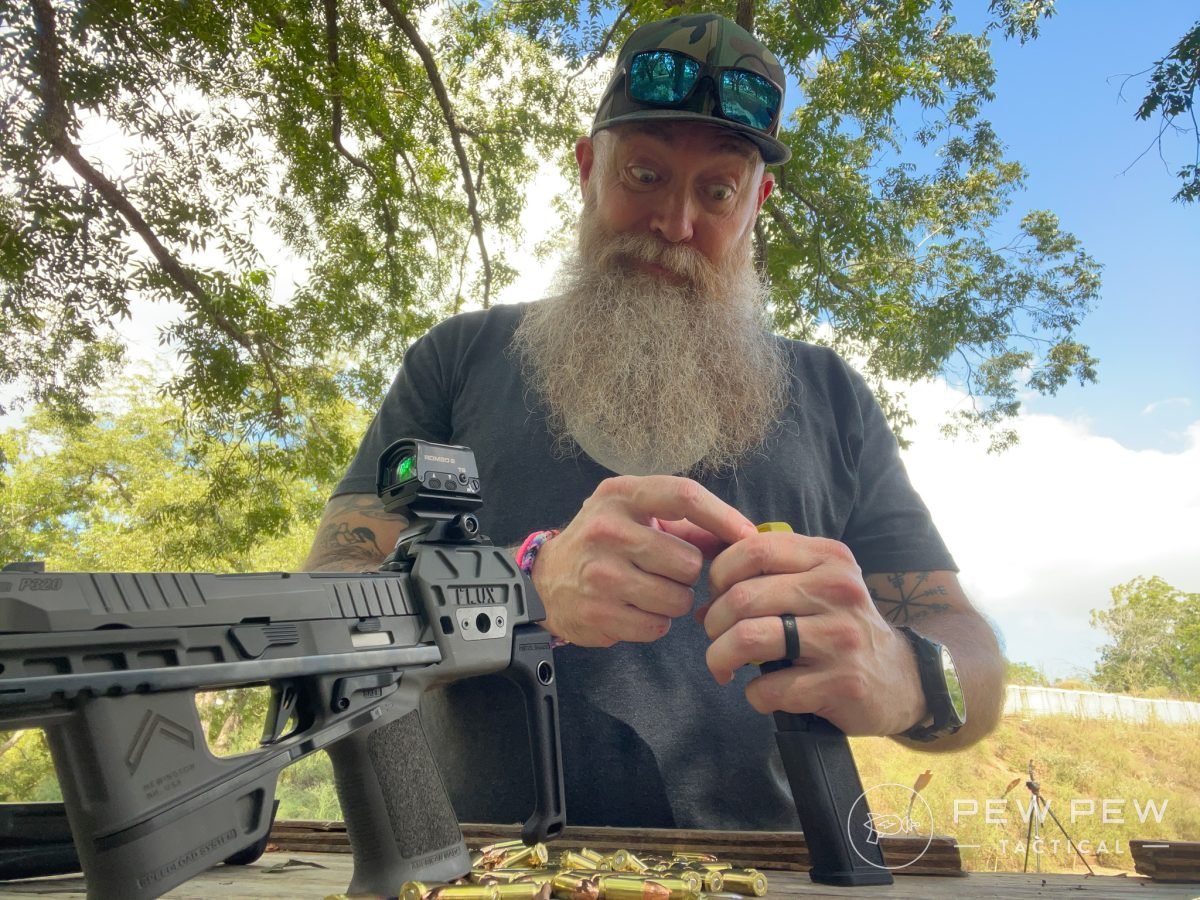
Specs & Features
Specs
- Caliber: 9mm
- Action: Semi-auto
- Capacity: 30+1
- Barrel Length: 3.9″
- Overall Length: 10.9″
- Height: 6.1″
- Width: 1.6″
- Weight: 49.2 oz.
- Comes With: Plastic case, two 30-round magazines,
Features
- Stabilizing brace
- Dual magazine system
- Integrated compensator
Background
Released in 2014, the P320 has been around for many years, becoming a full-size staple in the shooting community and in law enforcement. A few variants have evolved, including the M17 and M18, which were created to serve in military roles.
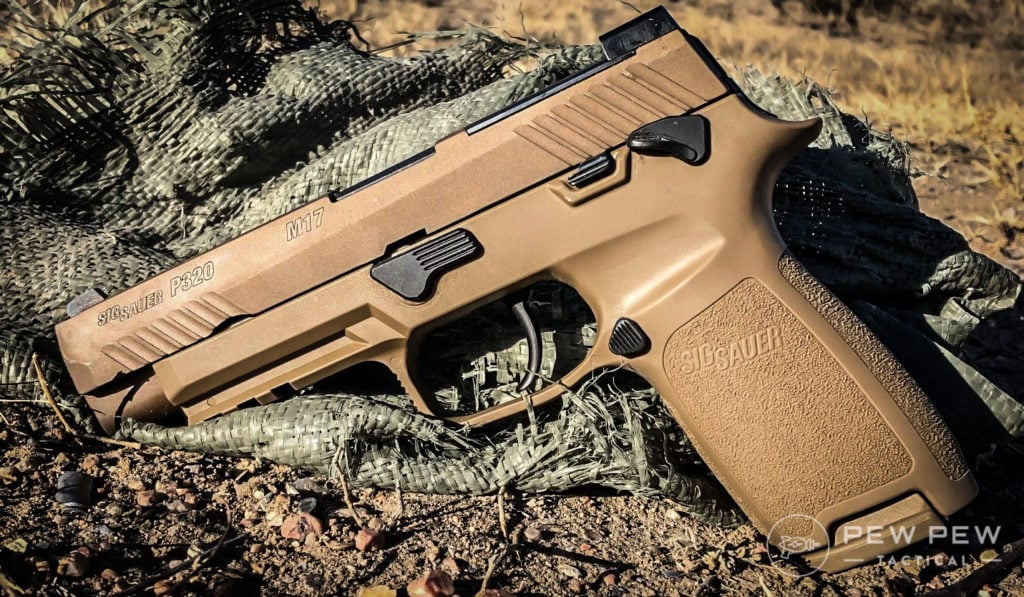
The model we tested is a combination of the Flux Defense Raider micro personal defense weapon (PDW) and a Sig Sauer P320 Legion. Sig’s website indicates this firearm was built with feedback from the Special Forces Community.
We have a whole guide to all the P320 models, so check it out for more details on the history and options in the P320 lineup.
Who Is the Sig P320 Flux Legion For?
While the concept of a PDW has existed for years, Flux Defense created frames to give the P365 and P320 extra capabilities, coining the category “micro PDW” due to their small size.
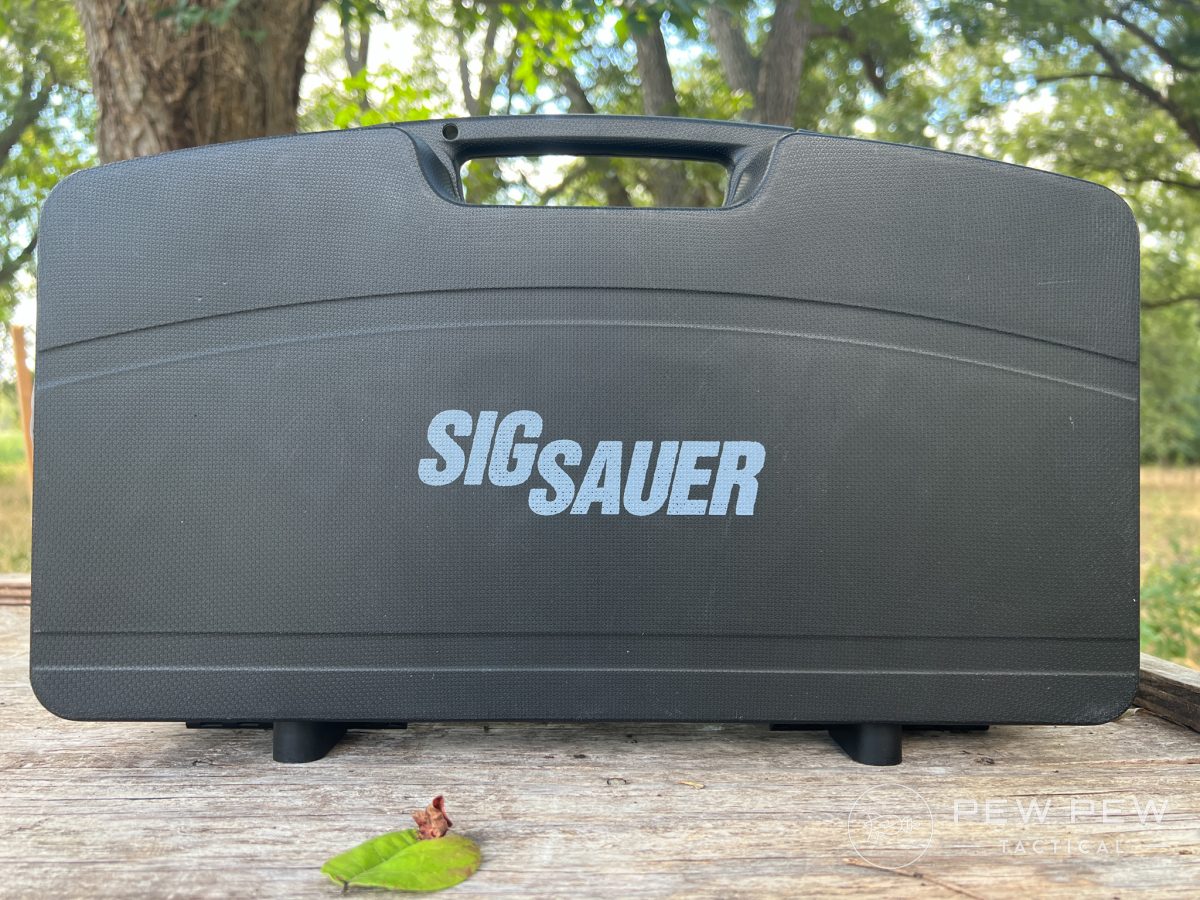
Quite a bit larger than a standard pistol, the P320 Flux Legion would still serve in traditional defensive roles, though it would be more challenging to conceal.
Ergonomics: Fit & Feel
Ergonomics are pretty good on the P320 Flux Legion, though the manual of arms is not a direct port of the pistol housed in the frame. While there are similarities, there are additional controls based upon the Flux’s unique capabilities.
The grip portion appears very similar to a standard P320 in shape, though there is an integral flaring at the magwell. The outsides of the grip have a sandpaper-like texture that works well.
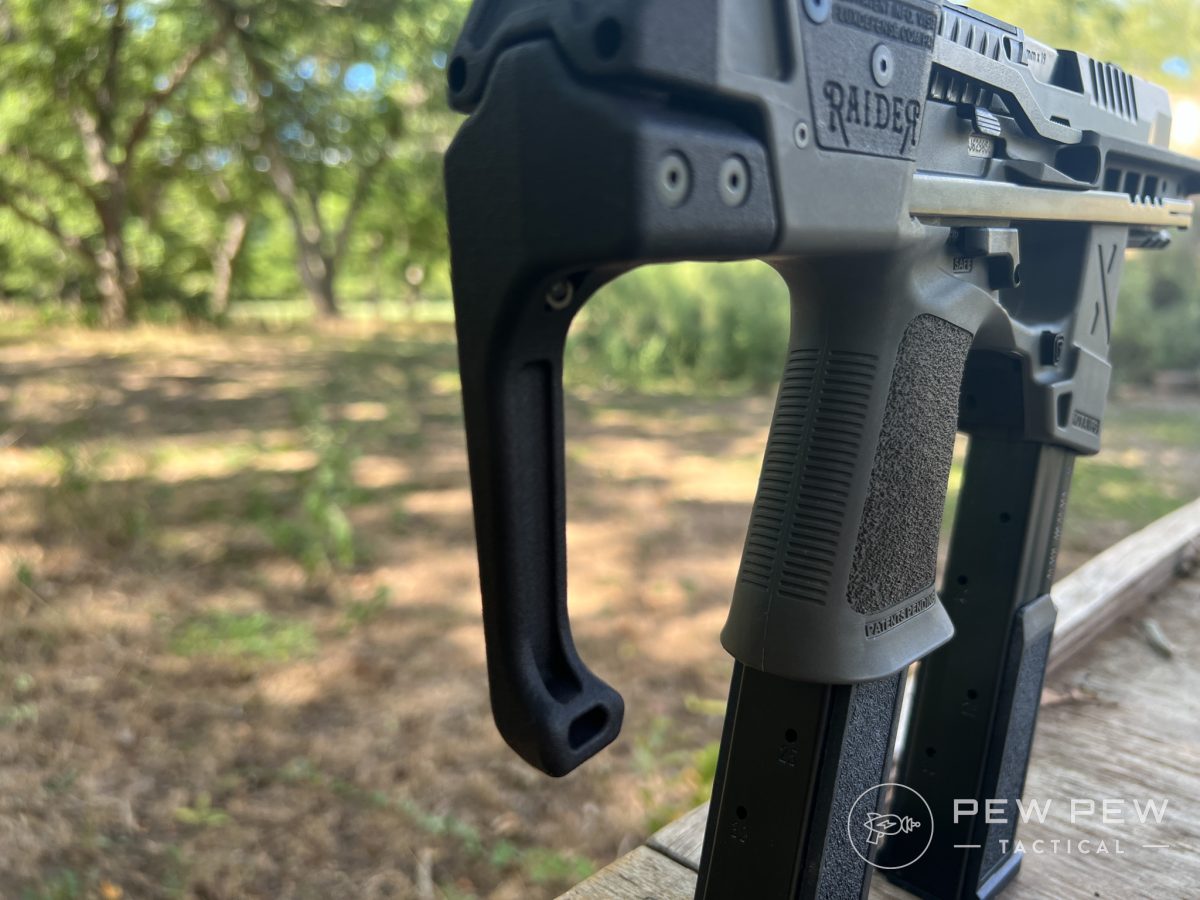
On the front of the frame, the additional magwell creates a great place for your support hand, similar to a submachine gun. The front of the frame even extends out beyond the muzzle, which allows a comfortable resting place for your extended thumb.
Underneath this forward portion, Flux Defense included another Picatinny rail section for other accessories, such as lights. Notably, this section got pushed against things when I compressed the tailhook in the rear.
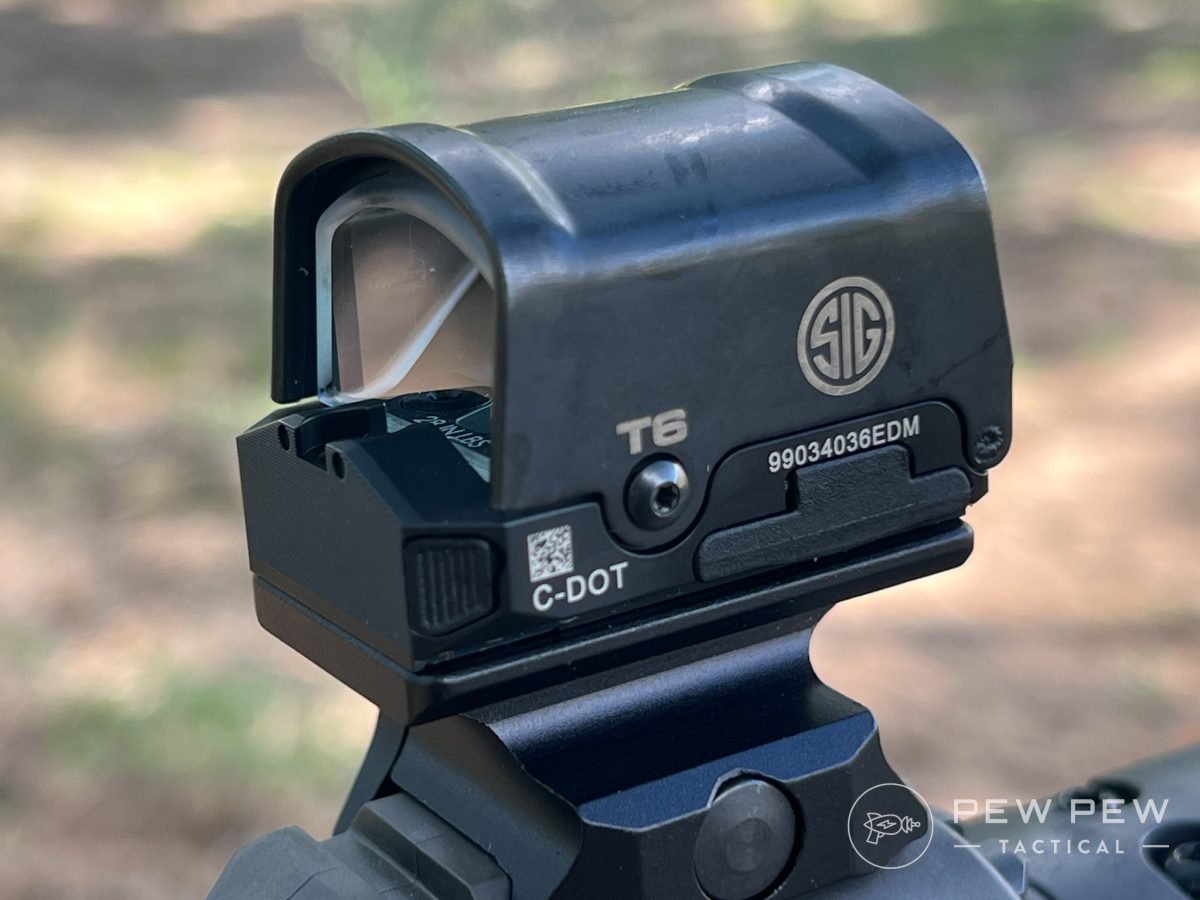
Up top, forward slide serrations are clutch as the rear serrations are covered by the optics tower. Shooters are forced to charge the weapon by racking the forward portion of the slide.
This optics tower includes a Picatinny rail section on top and a gap in the rear that allows shooters to use the Sig’s X-RAY 3. The space is fairly tight but functional, allowing easy use of the irons.
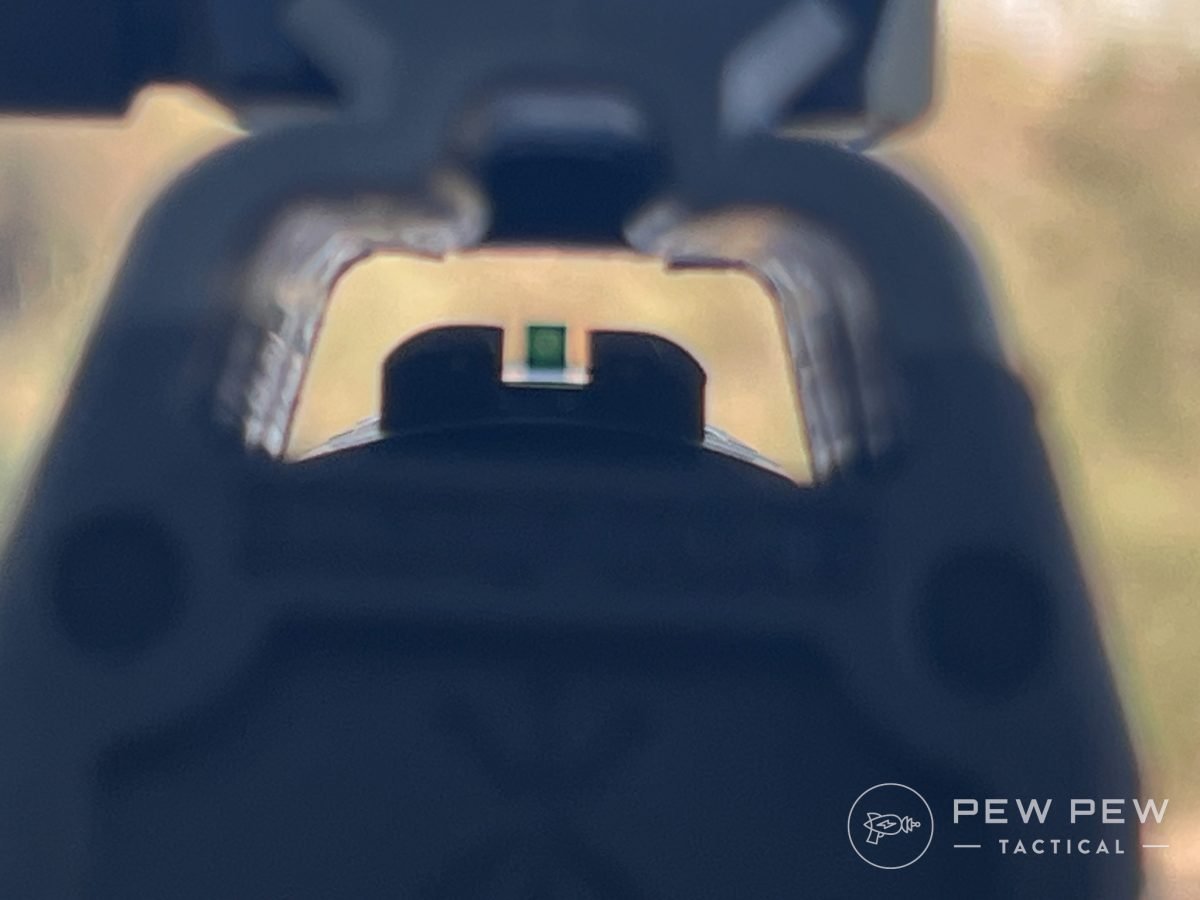
The tailhook, located to the rear, is an interesting feature that adds great stability. While stowed, the hook rested against my right wrist’s inner side, providing more stability.
This appendage is stored under pressure with a strong spring that can be difficult to compress without bracing the Flux against something. However, that spring pressure is required to fire the hook out to full extension and lock it into place.
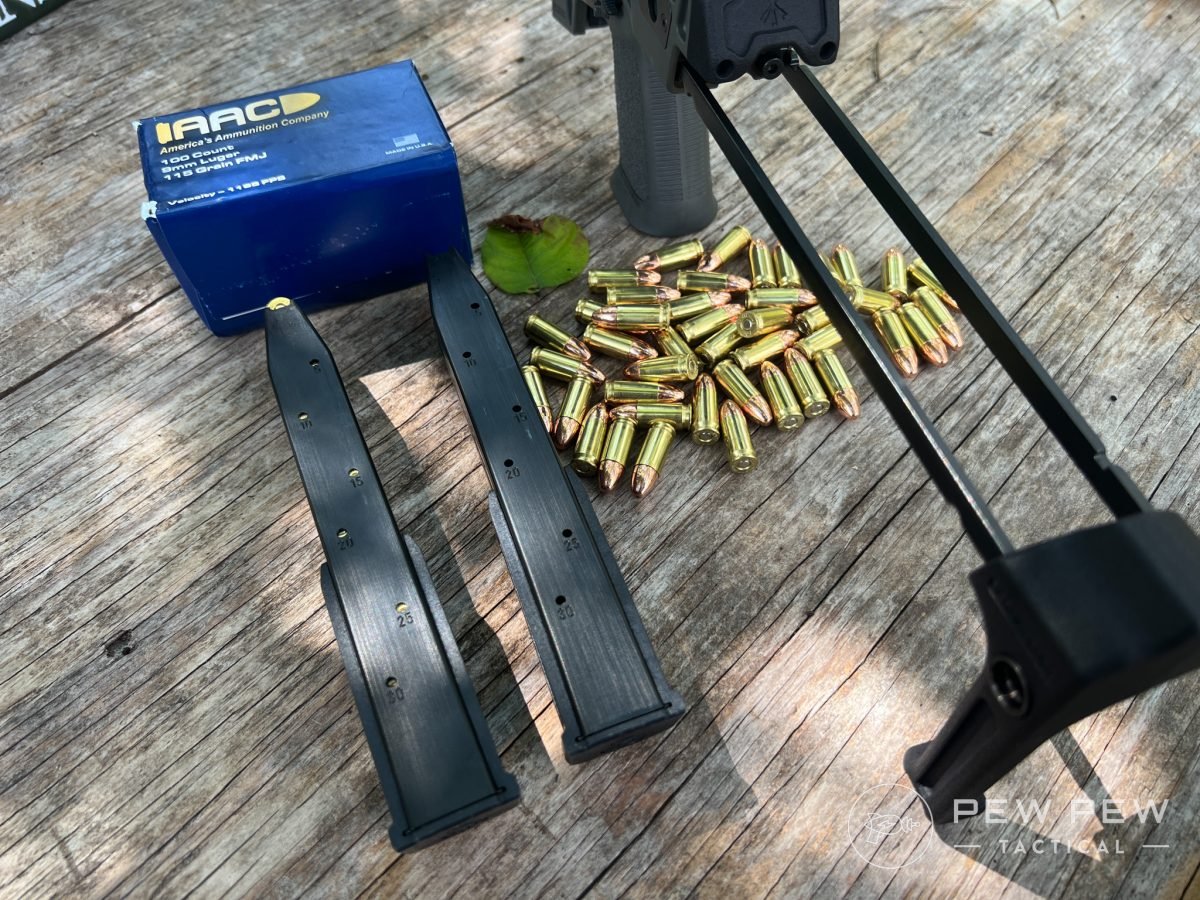
Two 30-round magazines feed the P320 Flux Legion. These steel magazines have polymer covers on the bottom and include rear windows and a high-visibility follower.
Controls
The controls seem pretty straightforward at first glance, though there are more features than a standard pistol, which dictate additional controls. Control locations are fairly intuitive as well.
On the left, you have a lever-type safety, which snaps down to the fire and flips up for safety. Just below on the grip, there is a magazine release for the main magwell, which pushes forward.
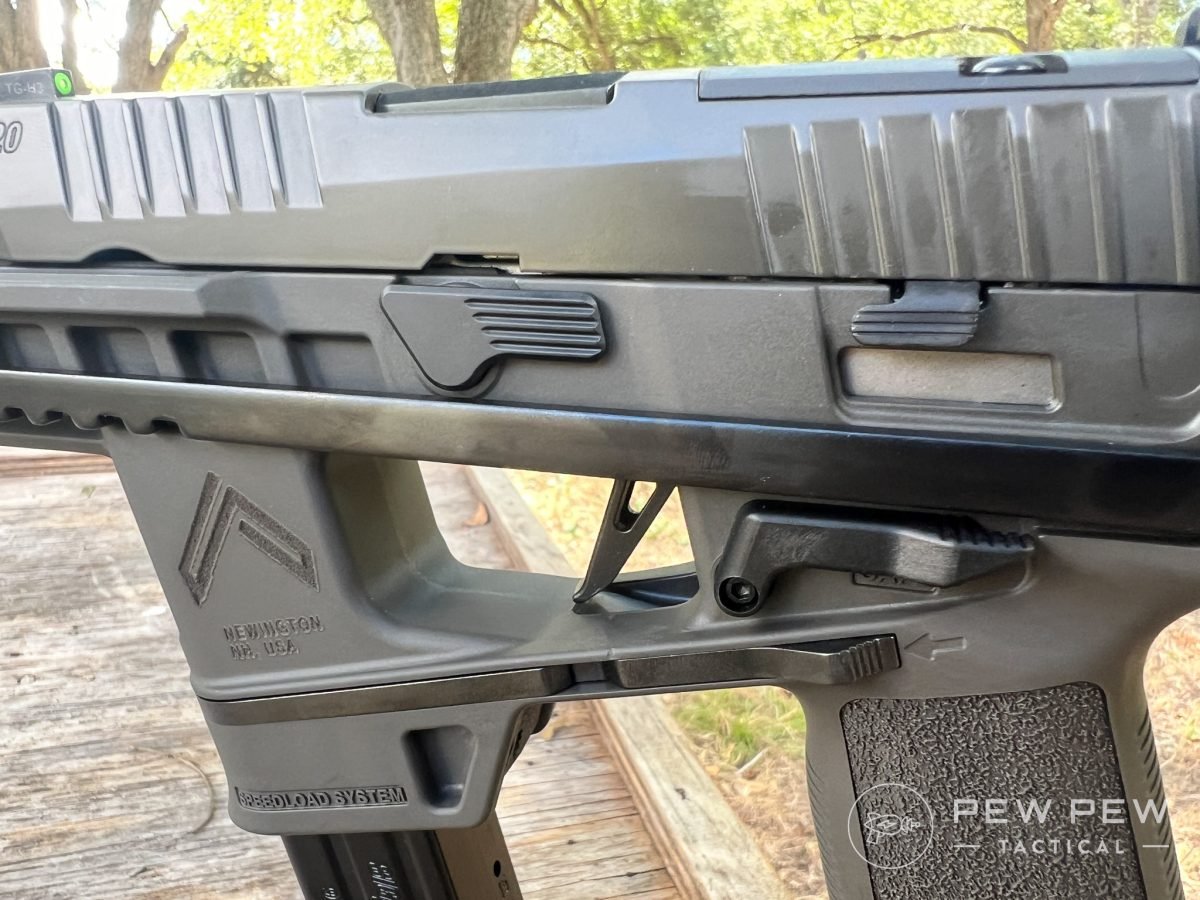
The slide stop is located fairly high, and I couldn’t reach it with my right hand when the tail hook was compressed. It was a simple matter of using my left hand to reload and release the locked slide.
One very cool feature the Flux implements is a double magazine release. By pressing the front magwell release a little, you can release the front magazine.
By pressing it all the way, you release the rear magazine as well. This makes for a really impressive mag change, dropping the full magazine into your hand while clearing the rear magwell simultaneously.
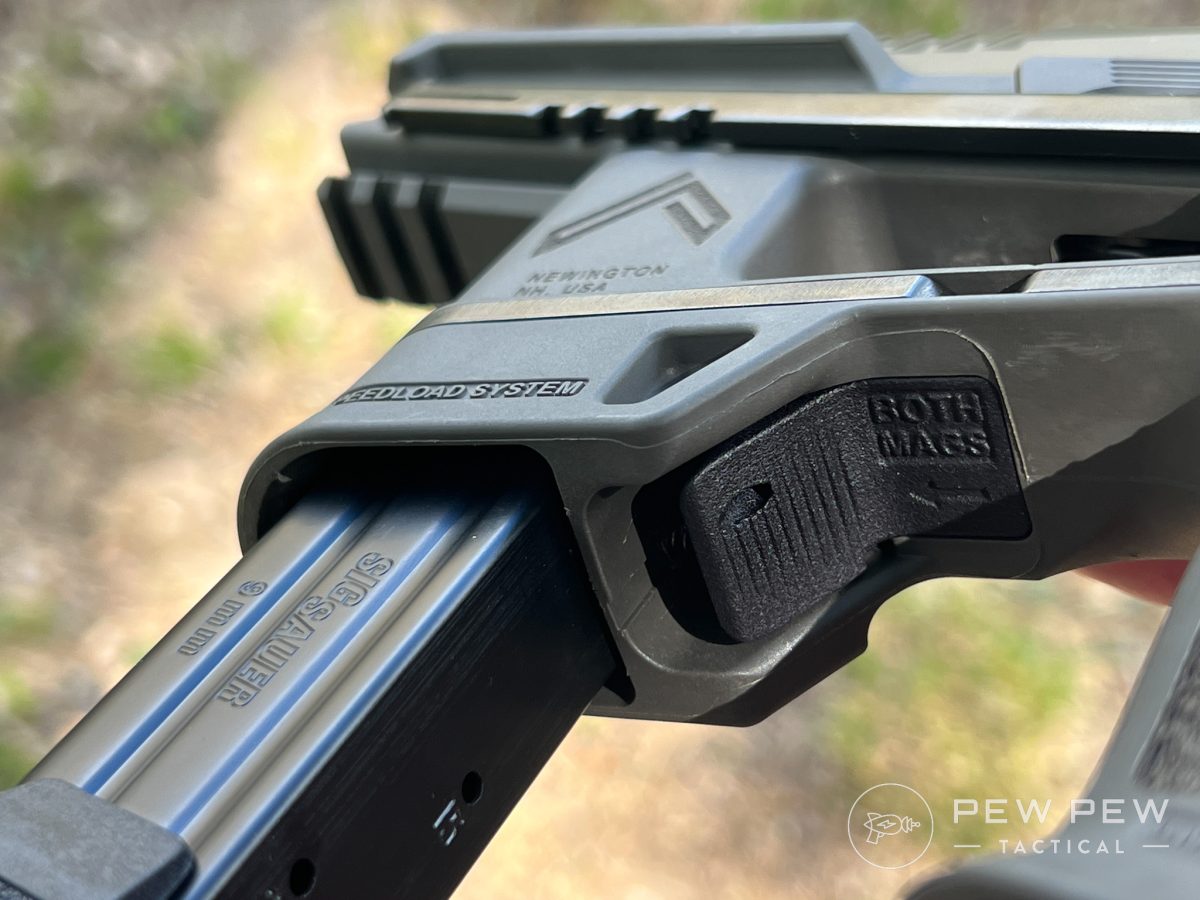
On the right side of the P320 Flux Legion, the safety and slide release are echoed in the same locations. However, the magazine release for the main magwell is on the forward magwell.
Finally, a long lever along the right side of the frame pulls down to release the tailhook. Though not ambidextrous, I was able to easily manipulate this with my right index finger.
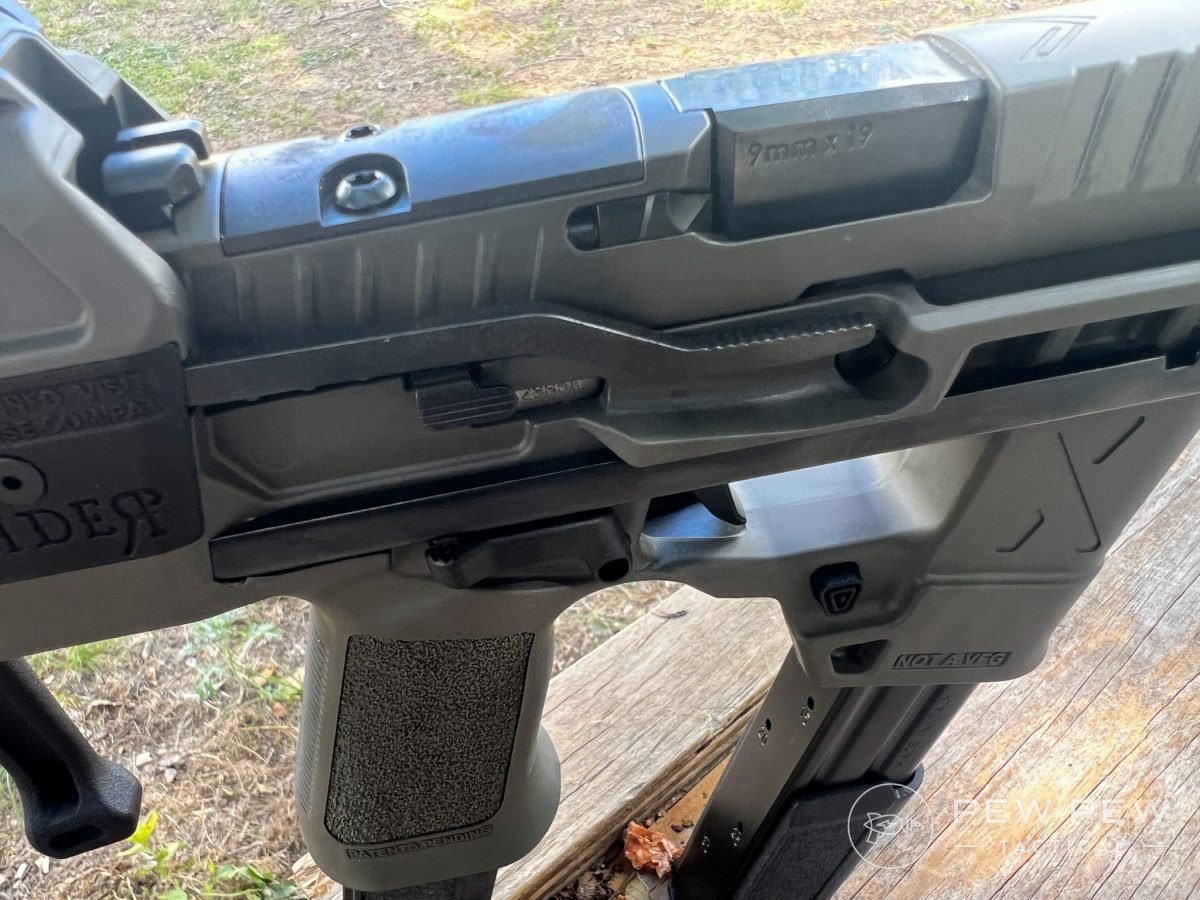
When the device deploys, it does so with a good deal of force. This ensures it snaps into a locked position so the armature doesn’t simply compress again.
Stowing the tailhook is achieved by pressing the lever again and smacking the hook on the rear to break it loose. There, it can be compressed into a locked position with a good deal of pressure.
The trigger, a component of the Sig FCU used in the P320 Flux Legion, features a flat-faced bow with a slightly curved tip for indexing the bottom. I found a couple of millimeters of take-up in the trigger before it hit a defined wall.
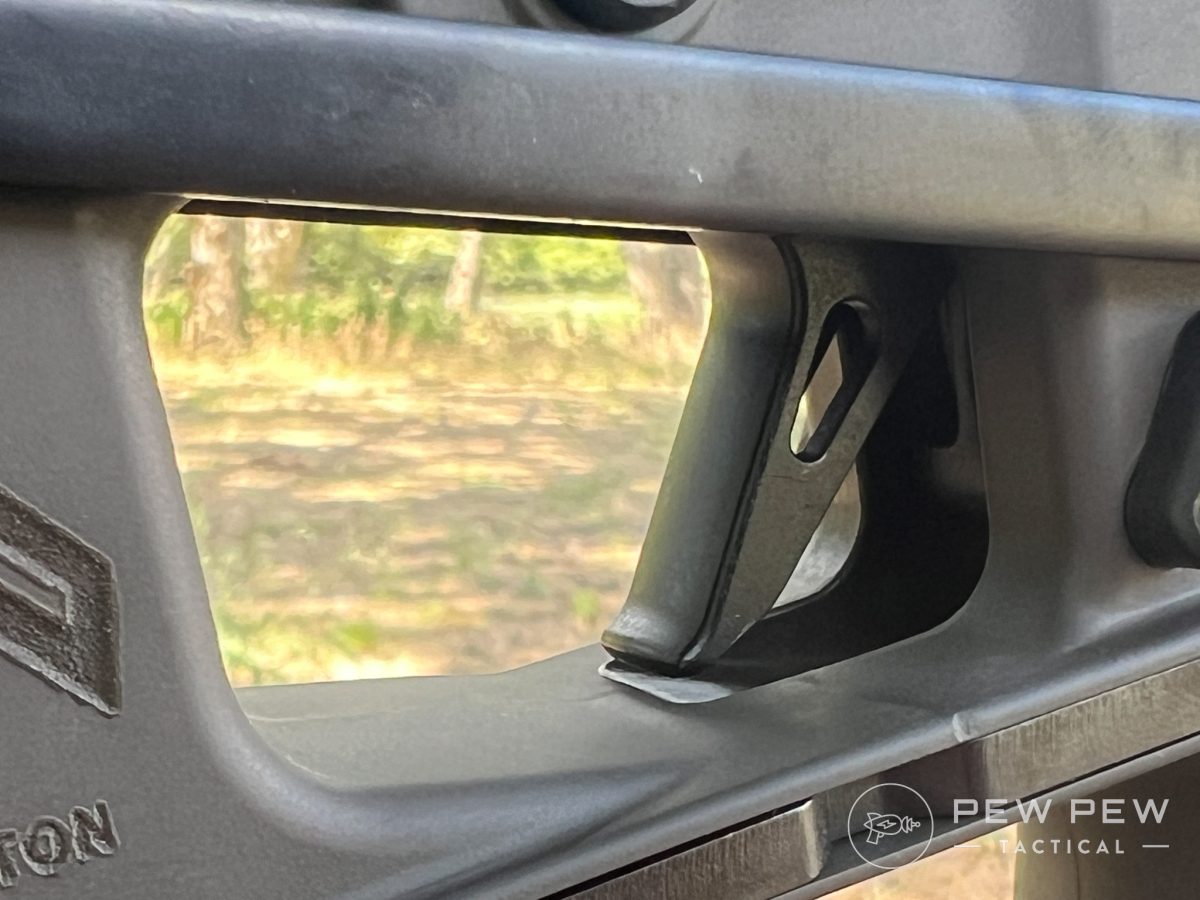
Once there, it broke cleanly at a light average of 2 lbs. 8 oz. on a Lyman Digital gauge. Reset occurred near the end of the return but was both audible and tactile.
How Does the P320 Flux Legion Shoot?
This very interesting firearm directly attacks two limitations inherent to pistols: capacity and stability. With two 30-round magazines, a compensator, and a stabilizing brace, the Flux Legion performs amazingly well in rapid, accurate fire.
The shooting impulse was a straight-up muzzle flip. This was significantly reduced by the weight of the loaded magazine in the front and the comp in the slide, which allowed for very rapid yet accurate fire.
I could absolutely drill a torso-sized steel plate at 10 yards, shooting with a rapidity I wouldn’t dare with most pistols. Deploying the tail hook and shouldering it allowed me to shoot with near-reckless abandon and still not miss.
The dot on the Romeo 2 simply jumped up a bit and then came to rest back where I was holding it. One issue I ran into, though, stemmed from gripping the frame with my support hand.
There is linkage between the two mag releases on the outside of the frame and although it is tucked away very cleanly, I unwittingly activated it with my palm by gripping the frame. This caused the front magazine to drop out until I reduced my grip pressure.
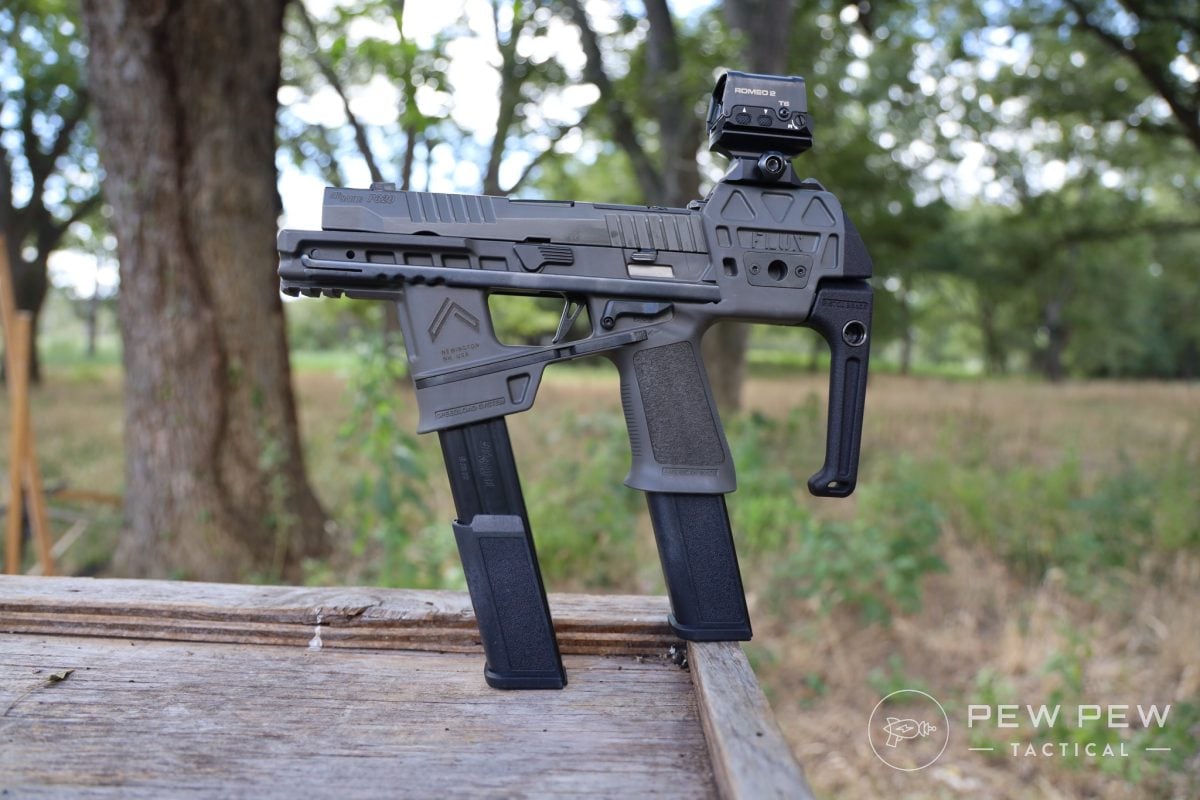
Accuracy
The accuracy was impressive. Shooting 10-shot groups from 7 yards, I launched both Hornady and AAC ammo downrange, braced and non-braced.
From these groups, I learned that the more I focused, the better the accuracy. Sure, that sounds obvious, but what I didn’t guess was my best group was unbraced.
My best group of 10 was 1.06 inches, with all rounds touching on a splatter target. Again, the accuracy was impressive with slow, focused fire.
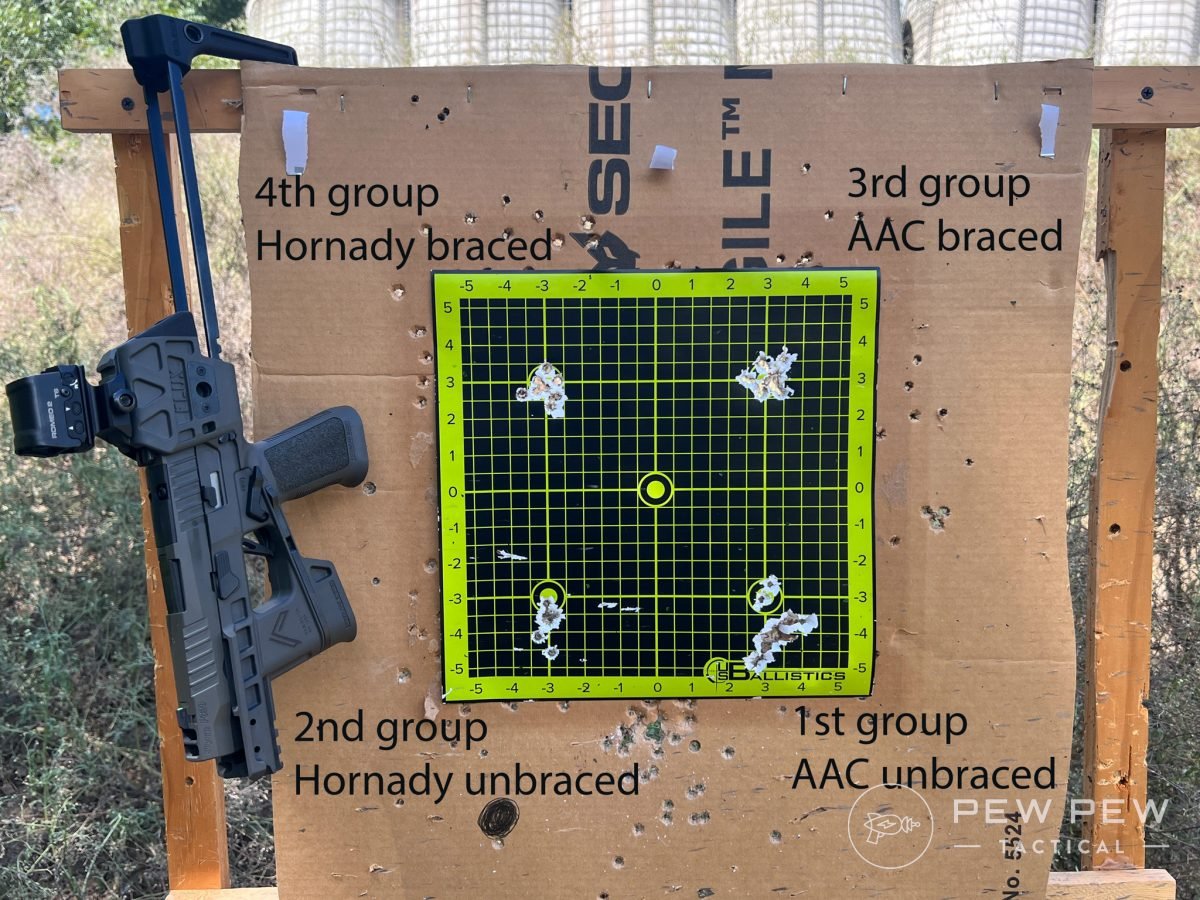
The tailhook really comes into play by helping tame the little bit of recoil the comp doesn’t delete. Braced up to the shoulder, the dot barely moves, even under rapid, sustained fire.
You don’t really get a solid cheek weld per se, but you can feel it there. It’s more like 3.5 points of contact which is more than you usually get on a pistol.
One noteworthy observation was when I shouldered the P320 Flux Legion, the dot was very close to my eye, closer than I usually shoot. The action of the slide moving back and forth was also much closer to my face than I was used to, but the performance soon outweighed this slight discomfort.
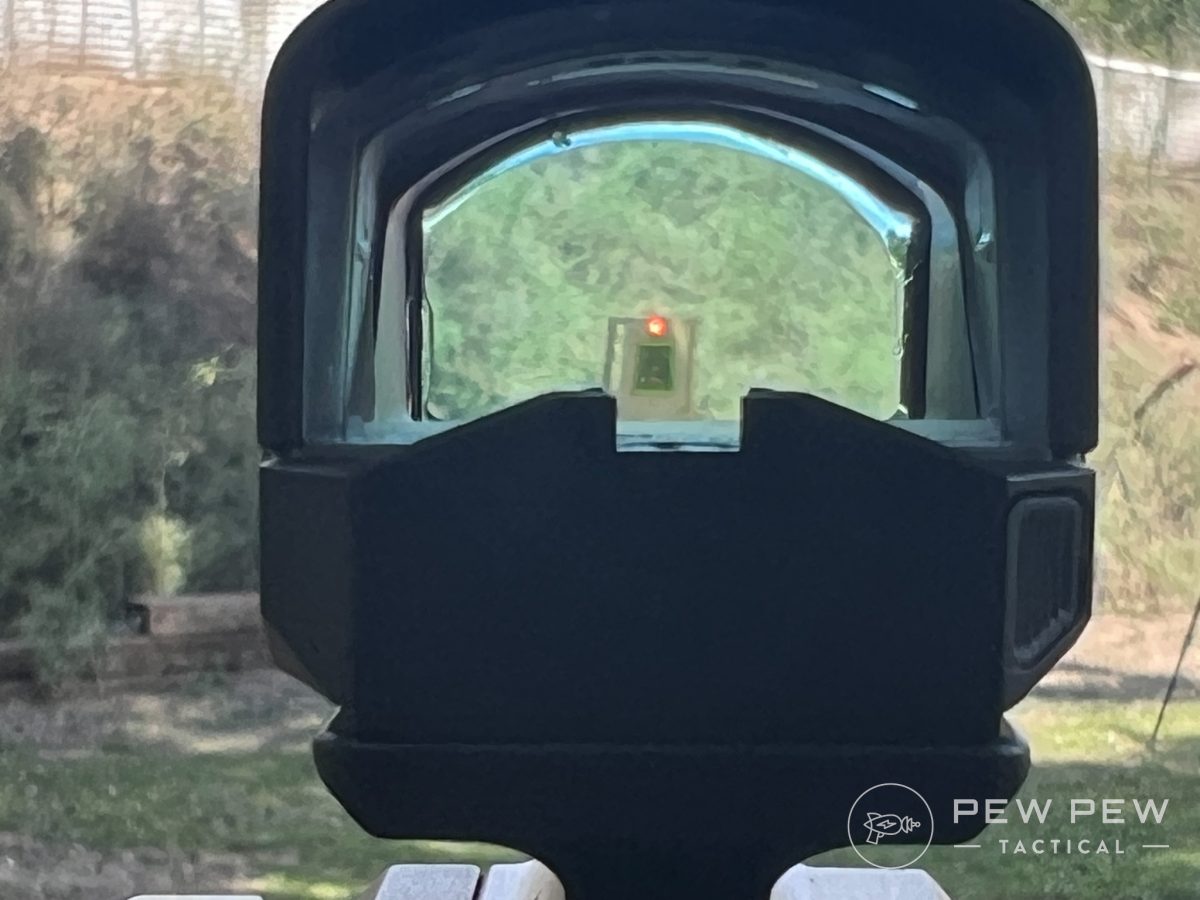
While the manual of arms was a little different, it didn’t take long to get used to. Having my primary and secondary magazines in the same workspace decreased the amount of time required for reloads.
The steel magazines also fed nicely, locked up every time they were inserted, and dropped cleanly when I pressed the releases.
Reliability was flawless. I would be remiss not to point out current allegations against the P320 series, but all the ones I’ve tested have had no issues.
Over two range sessions, through 500 rounds of practice and defensive ammo, the P320 Flux Legion fed, fired, and ejected perfectly.
Shooting with such speed and accuracy, I found myself burning through magazines at a rapid pace, only pausing long enough to load both up again before the next string. I shot the gun so much that it heated up the trigger enough to blister my finger.
Why is the P320 Flux Legion Unique?
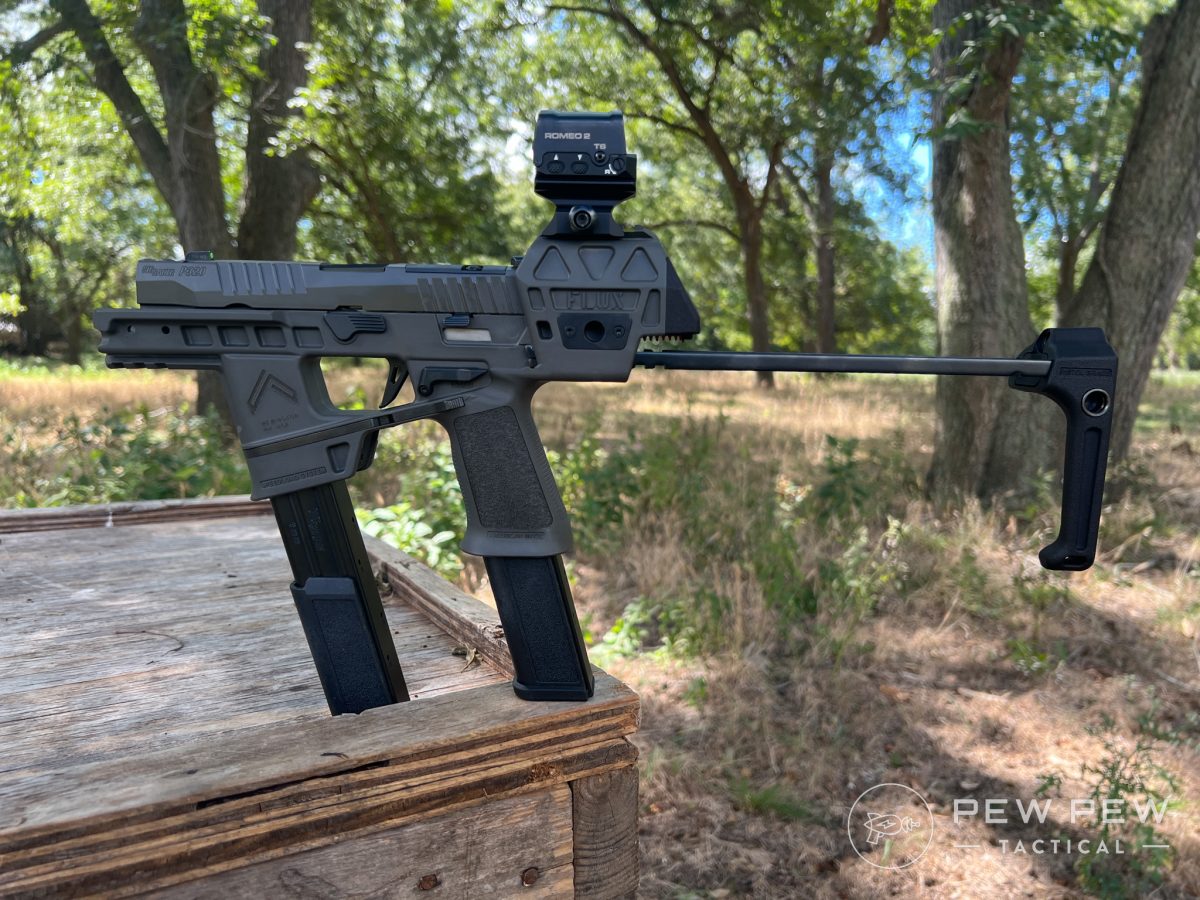
The P320 Flux Legion is unique because it is a hybrid, something between a pistol and a sub-gun. It has a very small footprint, which makes it concealable. That said, the P320 Flux Legion performs like a much larger firearm with a brace, forend, and expanded magazine capacity.
By the Numbers
Reliability: 5/5
Shooting on a reasonably hot Texas day, I continually fired through 500 rounds of JHP and hollow points. This P320 Flux Legion never faltered.
Ergonomics: 4/5
Besides the front magazine coming loose due to my grip, the ergonomics were good.
Accuracy: 5/5
From 7 yards, my best 10-shot groups averaged 1.5 inches.
Customization: 4/5
This pistol/PDW is already pretty customized, though you can add a variety of optics.
Value: 4/5
The P320 Flux Legion sells for $1,500 but performs like a sub-gun or even AR-15.
Overall: 4.5/5
Prices accurate at time of writing
Prices accurate at time of writing
-
25% off all OAKLEY products - OAKLEY25
Copied! Visit Merchant
Upgrades and Accessories
The P320 Flux Legion is already very customized, but if you purchase one, you might want to consider adding a Romeo 2 optic.
Prices accurate at time of writing
Prices accurate at time of writing
-
25% off all OAKLEY products - OAKLEY25
Copied! Visit Merchant
You’ll definitely want some quality ammunition to practice with; it goes fast through this gun.
Prices accurate at time of writing
Prices accurate at time of writing
-
25% off all OAKLEY products - OAKLEY25
Copied! Visit Merchant
Finally, some eye and ear pro will be important because while this PDW is compensated, it isn’t suppressed.
Prices accurate at time of writing
Prices accurate at time of writing
-
25% off all OAKLEY products - OAKLEY25
Copied! Visit Merchant
Why You Should Trust Pew Pew Tactical
At the helm of this review is Pew Pew Tactical Content Producer Sean Curtis, who has been shooting since childhood but really began to delve into guns during his 20+ years in law enforcement. During that time, he became a POST-certified handgun instructor and NLEFIA Red Dot Instructor and received CLEFIA Advanced Firearms Instructor Training and AR-15 armorer training. Since then, he has attended a variety of training, including Tactical Performance Center Handgun Mastery & Carbine Mastery, and earned USCCA rifle instructor certification. Before joining PPT full-time, Sean wrote for several gun publications evaluating and testing guns and gear and has written hundreds of articles.
Editing this article is Editor-in-Chief Jacki Billings. With a bachelor’s degree in mass communication and a member of the Society of Professional Journalists, ACES: Society for Editing, NSSF, and the Professional Outdoor Media Association, Jacki runs our experienced team of expert writers and editors. She has worked as a media professional for over 20 years and has specialized in gun media for almost 10 years, authoring 2,000+ articles and editing two books. As Editor-in-Chief at Pew Pew Tactical, she uses her expertise to set testing protocols and editorial standards across the site.
Final Verdict
The P320 Flux Legion is a bird of a different feather. Fully loaded, it’s still small enough to fit easily into a backpack.
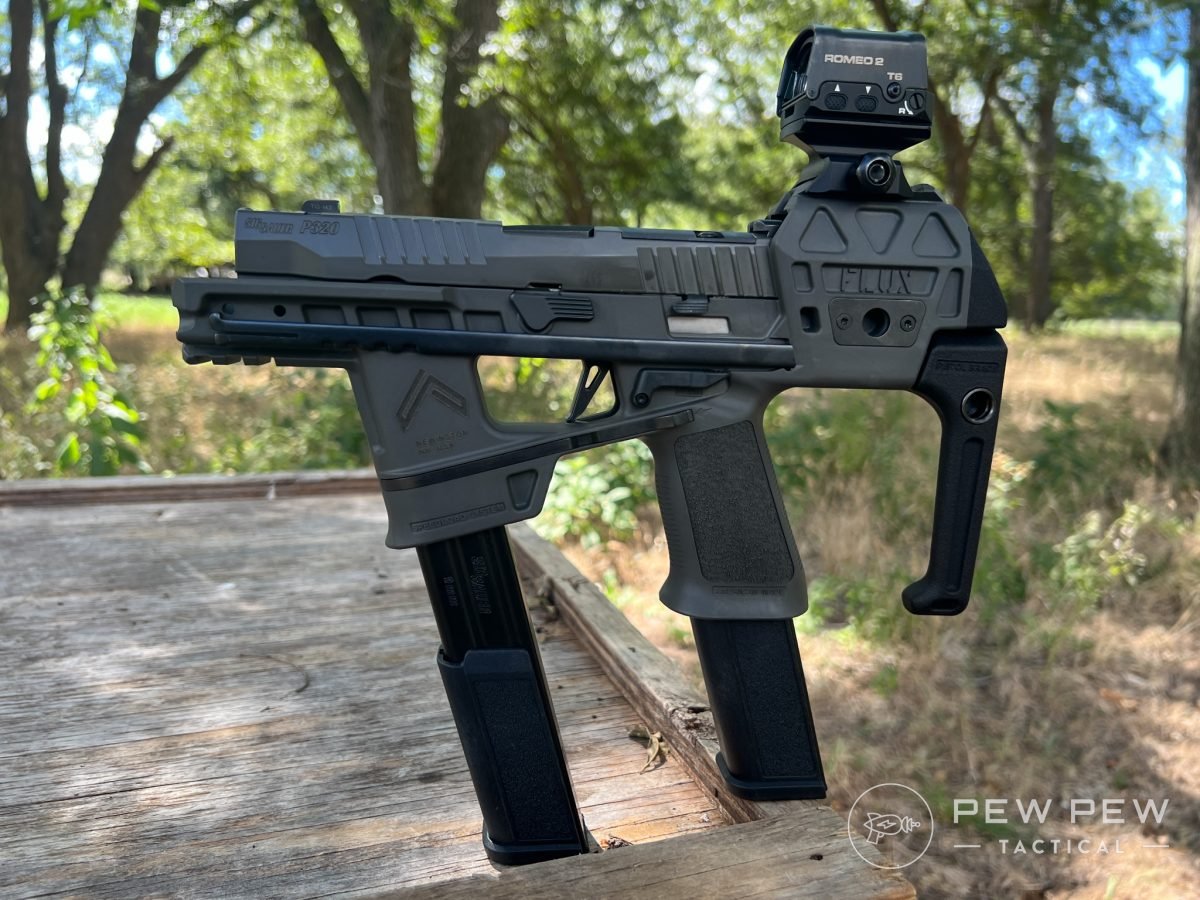
Yet with extra points of contact and a compensator, it shoots more like a sub-gun, even an AR-15. It is capable of shooting incredibly fast while still maintaining accuracy.
Going to pick up a P320 Flux Legion for yourself? Let us know in the comments below. For more PDW action, check out the ultimate shorty…the Daniel Defense DDM4 PDW!

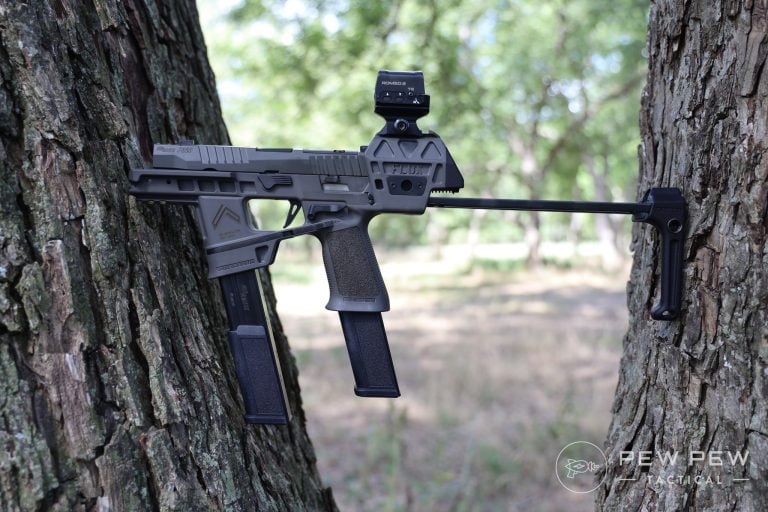
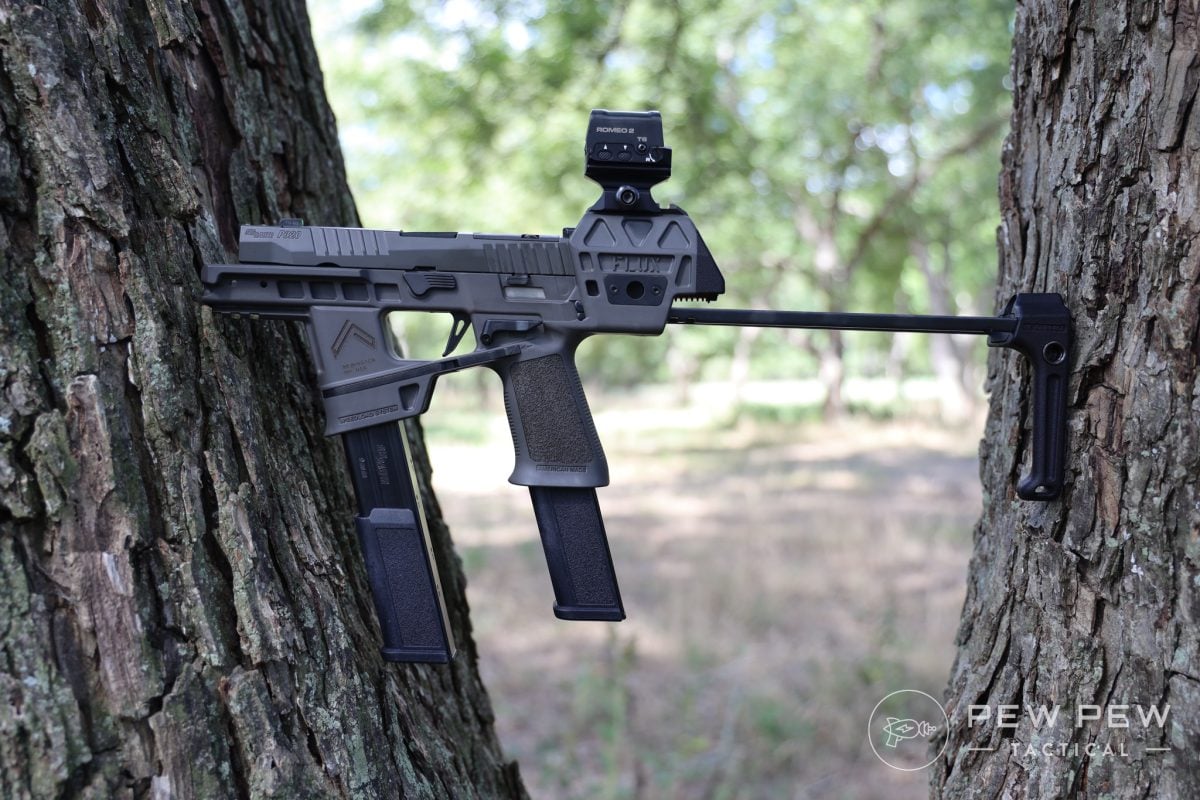
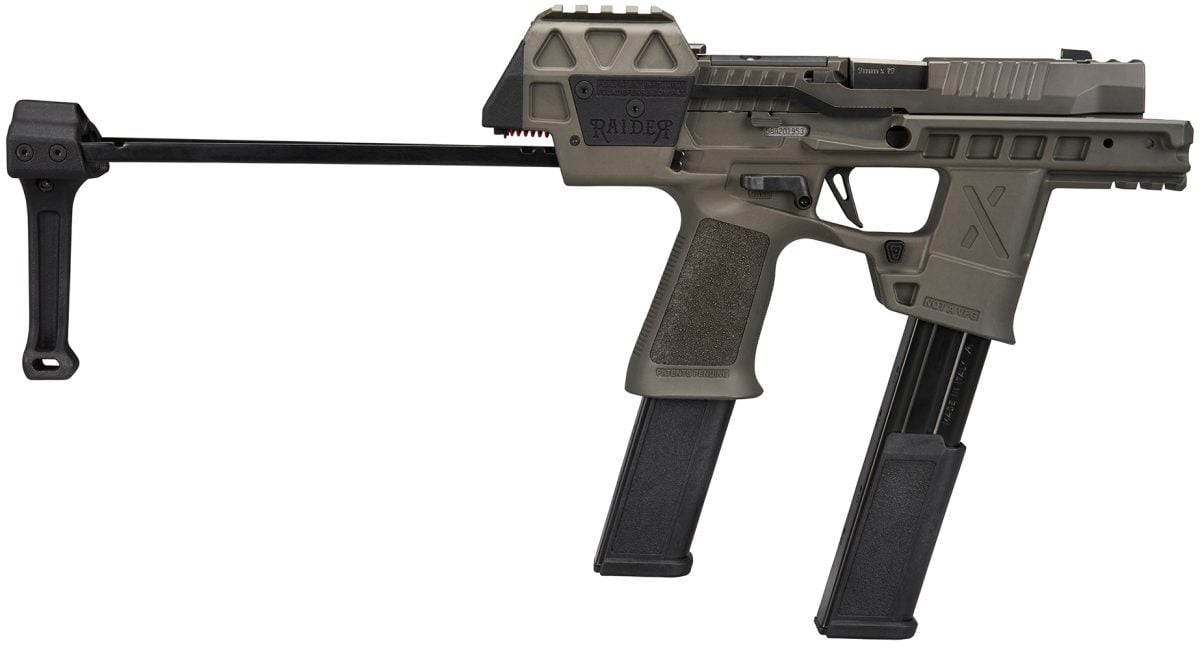
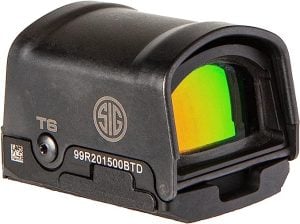









11 Leave a Reply
picked mine up two days ago! looking at dot options... maybe a quick detach strap and a under mount light ... any thoughts / feedback?
Tom, sorry for the late response. The world is your oyster when it comes to dots and lights. I liked the Romeo 2 Sig included because it came with a riser. Getting your optic to the proper eye height during a presentation is key.
It is because the top optic mount vs slide mounted. I chopped mine
Sean, I was lucky enough to pick up a Flux after I demo'd one at a Sig Event - was really impressed with how it shot - I easily dropped all the plates on a plate rack at 15yds. Wondering though if you shot groups at 25yds and what kind of accuracy you got at that range. I have tight enough groups at 15yds that I'm happy with it, but have found that at 25yds, even off a rest, it can really open up to 4-5" - which I really don't like (I can get 2" groups from my HK SP5)
Good deal Ron! Sorry for the late reply. I didn't shoot groups for accuracy but was able to ring steel fairly consistently. It's been a while since you posted this. Are you still enjoying it?
I ordered one in June during my favorite FFL’s Sig Days & was told by the Sig rep I’d have it by August. It’s the 3rd week of October & I still don’t have it & my FFL has no clue as to when it will ship (& it’s a flag ship FFL).
These are popular enough right now that inventory is going to be hard to come by. Be careful, some places are even raising the price.
I will absolutely be buying one if these. I’ve been watching, hoping to catch at least enough off to pay for a good portion of a red dot.
Good luck! Most folks are struggling to find them currently.
These have been out of stock for about the past year. Has anyone had any luck picking one up?
I want the 365.
It's going to be tough to find them for a while.